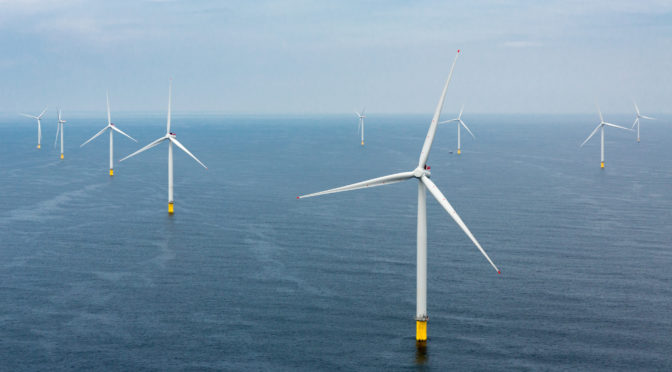New GWEC Market Intelligence Report shows offshore wind energy sector has grown 21% average each year since 2013, taking total to 23 GW installed capacity globally.
GWEC sees potential for sector to install additional capacity of 200GW by 2030 under its upside scenario and 190 GW of capacity under business-as-usual scenario.

Asian offshore wind turbines market including China is expected to become the largest offshore region globally.
The Global Wind Energy Council (GWEC) has launched the first edition of its Global Offshore Wind Report, which provides a comprehensive analysis of the prospects for the global offshore wind market, including forecast data, market-level analysis and review of efforts to lower costs.
The global offshore market has grown by an average of 21% each year since 2013, reaching total installations of 23 GW. More than 4 GW of new capacity was installed each year in 2017 and 2018, making up 8% of the total new installations during both years. For the first time, China was the largest offshore market in 2018 based on new installations, followed by the UK and Germany.
Karin Ohlenforst, Director of Market Intelligence at GWEC, said: “We are standing within reach of a truly global offshore wind industry. Based on government targets, auction results, and pipeline data we expect to see 190 GW of new capacity to be installed by 2030, but this does not represent the full potential of offshore wind. Many new countries are preparing to join the offshore wind revolution, while floating offshore wind represents a game-changing technological development that can add even more volumes in the years to come.”
Alastair Dutton, Chair of Global Offshore Wind Task Force at GWEC said: “The industry is continuing to make significant strides on cost-competitiveness, with a average LCOE of $50/MWh being within reach. This achievement increases the attractiveness of offshore wind in mature markets where a number of governments are discussing long-term climate targets that, if they are to be achieved, must seriously consider the contribution large-scale offshore wind can make. New offshore markets represent significant potential and if industry and governments can work together, as we have seen recently in the case of Taiwan, we can build the necessary policy frameworks at greater speed to ensure growth can be achieved sooner than later.”
In the report, GWEC Market Intelligence provides a market outlook representing a “business-as-usual” (BAU) scenario which does not incorporate further technical development or further opportunities for offshore wind, and an upside scenario which captures the additional potential.
The BAU scenario expects double-digit growth for the global offshore market based on current policies and expected auctions and tenders. This scenario makes annual installations of 15 to 20 GW after 2025 realistic based on growth in China and other Asian markets, amounting to 165 GW of new installed capacity globally between now and 2030. This would bring the total installed capacity to nearly 190 GW.
The upside scenario captures additional potential such as the advancement of floating technology, increased cost competitiveness and therefore greater volume in mature markets, as well as the opening up of new offshore markets. Based on this scenario, a more positive outlook of over 200 GW new installed capacity between now and 2030 is possible, totalling approximately 210 GW installed capacity.
Market and regional highlights:
- Europe: Short-term, the European offshore market will remain flat with few projects reaching installation and COD during 2020, however, the cost competitiveness of European offshore will remain a key driver for volume. The Sector Deal in the UK provides a stable outlook, while volumes for Germany have still not increased despite government’s awareness. Total installed capacity for the region under the BAU scenario is expected to be 78 GW by 2030.
- Asia: The Asian offshore market including China is expected to become the largest offshore region globally with key growth markets including Taiwan, Vietnam, Japan, India and South Korea. Total installed capacity for the region under the BAU scenario is 100 GW by 2030.
- US: First installation of large-scale projects expected between 2021 and 2023 bringing total installations to 2 GW by 2025, potential for 10 GW total installations towards 2030 with increasing experience and maturing of the local supply chain
The full report includes analysis of the building blocks of a systematic approach to lowering cost and managing risks. This includes a thematic analysis of health and safety procedures, financing, planning and consent regulation, supply chain development and technological innovation. The full report is exclusively available for GWEC members.


